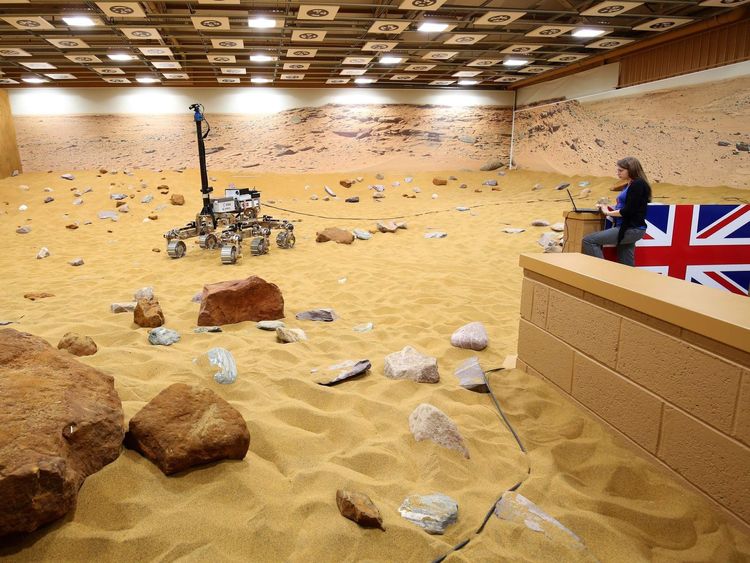Work has started in Britain on building on a robot vehicle that will be sent to look for life on Mars.
The European Space Agency's Mars rover is being constructed in Stevenage with the aim of exploring the Martian surface in 2021.
It has a drill to probe up to two metres under the surface of Mars and has instruments on board that can examine the samples it finds.
The 300kg robot vehicle is capable of travelling 2cm a second for at least 90 days, but scientists hope it will remain active for as long as the latest American rover Curiosity, which landed in August 2012 and is still exploring.
Liz Seward, senior strategist at Airbus Defence and Space in Stevenage, said it was a first for the European space project.
"It's part of a big plan called the global expedition road map," she said.
"We've got robot expeditions going to the moon and Mars and the plan is to do humans to the moon next and Mars after that in 2030.

"What's really exciting is that this week we will be sending part of the Orion spacecraft to America, which is the European contribution to people going to the Moon, in the next few years."
The Orion spacecraft is a European-American joint venture which is designed ultimately to take humans to the Moon, Mars and other destinations in the solar system.
Airbus, which bases its space systems division in Stevenage, is responsible for building Orion's service module and the ExoMars rover project.
Ms Seward said the exploration of Mars by robots should pave the way for humans to follow within the next few decades.
"I definitely think we can explore Mars; colonisation is tricky – it's a very harsh environment," she added.

"But the plan at the minute in the next decade or two is to look at how people can live in space and use the moon as a test ground and then sometime after 2030 we will have people exploring the Red Planet."
The European Space Agency plans to launch its Mars rover on its journey in the summer of 2020, with the aim of seeing it land in the spring of 2021.
Whereas previous expeditions have looked at the chemistry and geology of the Martian surface, Ms Seward said the European rover will be examining its potential biology.
A prototype of the rover, nicknamed Bruno, was brought on to the Sky campus on Sunday to illustrate what the vehicle is capable of.

It came ahead of the launch of the new six-part second series of the National Geographic channel's Mars programme, produced by Ron Howard and Brian Grazer and featuring interviews with Elon Musk among others.
The show will look at how it will be possible to live on Mars and will tackle subjects like the tension between scientific exploration and the commercial opportunities such missions will open up.
More from Mars
Previous American Mars rovers have discovered fossilised cracks in mud and sediments that suggested the presence of liquid water in Mars's past, other signs that led the team to conclude habitable conditions on the planet lasted millions of years and key elements that could have provided the building blocks for life.
:: The second season of Mars starts on Sunday 11 November at 8pm on National Geographic.
[contf] [contfnew] 
Sky News
[contfnewc] [contfnewc]






